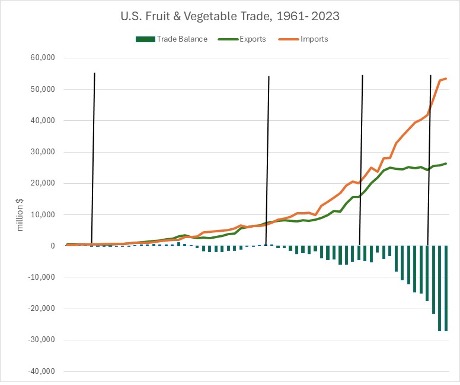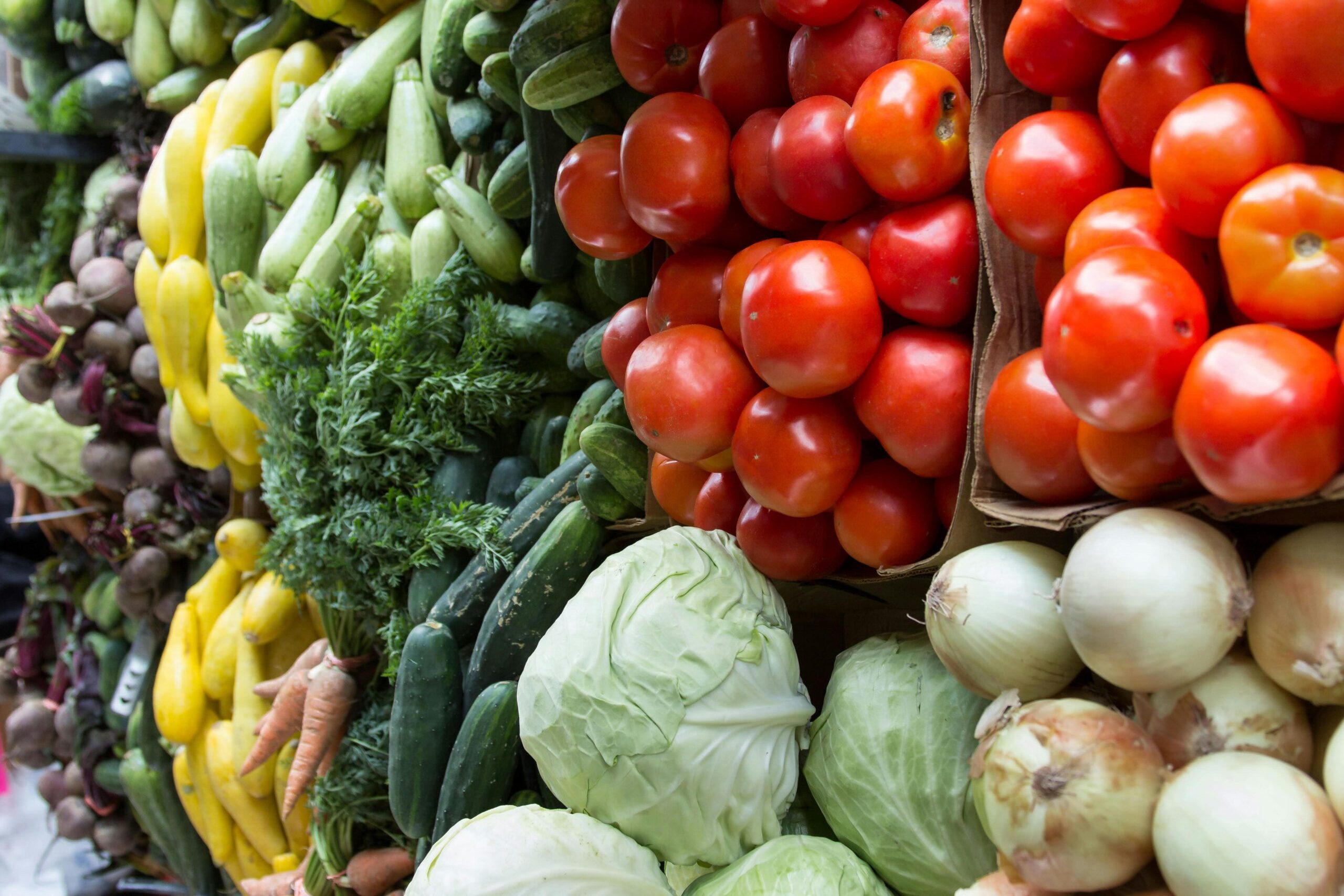Fruit and vegetable sectors are important contributors to the U.S. agriculture economy. At the same time, they are particularly vulnerable to import competition and recorded a positive annual trade balance in just 18 of the 63 years between 1961 and 2023 (Figure 1).

From an economic perspective, sustainable market competitiveness (whether domestic or international) is driven by a combination of: (1) lower cost throughout the supply chain; (2) prioritized market access – earlier entrance to a market or better market intelligence; and (3) increased value to buyers – differentiated products that consumers can identify, want, and purchase.
The Southeastern specialty crop sector comprises hundreds of unique crops and growing situations, with the emergence of new or differentiated crops ongoing. While this creates opportunities for market development and response to consumers, it can create challenges for the development and commercialization of innovative technologies to lower costs. Technology development for specialty crops must either target a relatively small number of potential users or be adaptable over differentiated use cases. Agricultural research and manufacturing interests are more likely to focus on the needs of the almost 300,000 U.S. farms (80.6 million acres) growing corn for grain in 2022 than the needs of the less than 8,500 U.S. farms (73,500 acres) growing strawberries. Additive manufacturing technologies may eventually expand solutions for small-volume agricultural needs as they have in manufacturing sectors of the economy (Lu et al., 2024).
There is widespread recognition that the cost and availability of labor are one of the leading challenges (IFPA, 2023; Martin 2024). Mechanized solutions such as precision agriculture, remote sensing, mechanical harvesters, and labor-aids offer potential benefits as labor-saving technologies. Concerns over labor availability and affordability are not new, and neither are attempts to develop mechanization. Yet the adoption of such technologies has been uneven, over time and across commodities. Recent policy changes are aimed at the affordability of workers. On October 2, 2025, the U.S. Department of Labor (DOL) issued an Interim Final Rule establishing a new, skill-based methodology for calculating the Adverse Effect Wage Rate (AEWR) for H-2A agricultural workers in non-range occupations, aiming to lower costs for farmers.
Unique needs among the myriads of commodities, markets, and supply chains that comprise specialty crops makes shifting sector competitiveness challenging, even within seasonal markets. Technologies compatible with large-scale systems may not be feasible on a smaller-scale and vice versa. It is critical to assess technology and information needs for small-scale and regional challenges as well as large commercial farms.
References
International Fresh Produce Association (IFPA). 2023. Future Trends Report. Available online: https://www.freshproduce.com/resources/consumer-trends/2023-future-trends-report/
Lu, Y., W. Xu, J. Leng, X. Liu, H. Xu, H. Ding, J. Zhou, and L. Cui. 2024. “Review and Research Prospects on Additive Manufacturing Technology for Agricultural Manufacturing.” Agriculture 14(8):1207.
Martin, P. 2024. Bracero 2.0: Mexican Workers in North American Agriculture. Oxford University Press.
Thirnsbury, Suzanne. “Southeastern U.S. Specialty Crop Sector Competitiveness: Moving the Needle.” Southern Ag Today 5(42.5). October 17, 2025. Permalink

